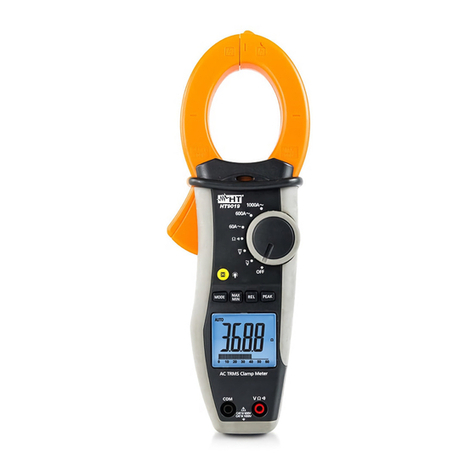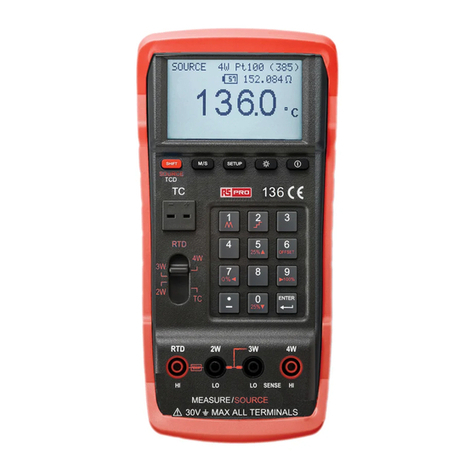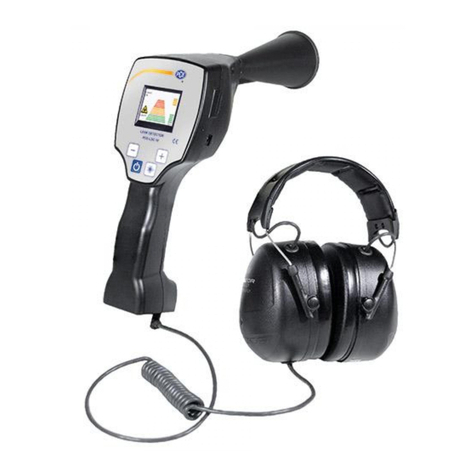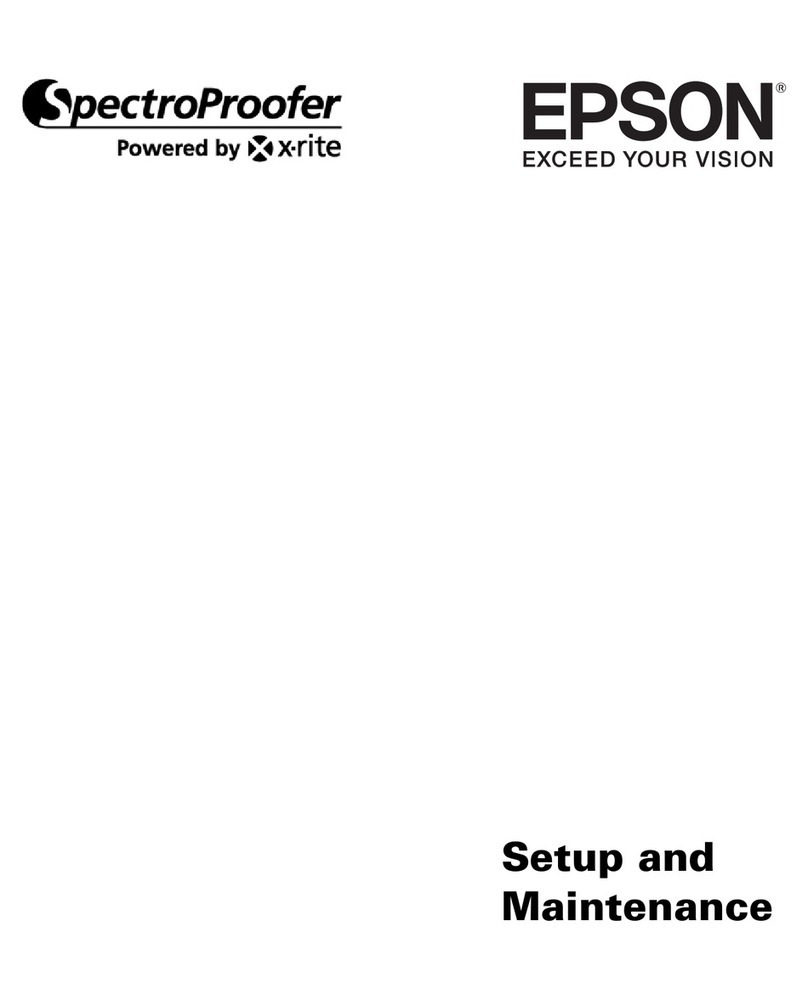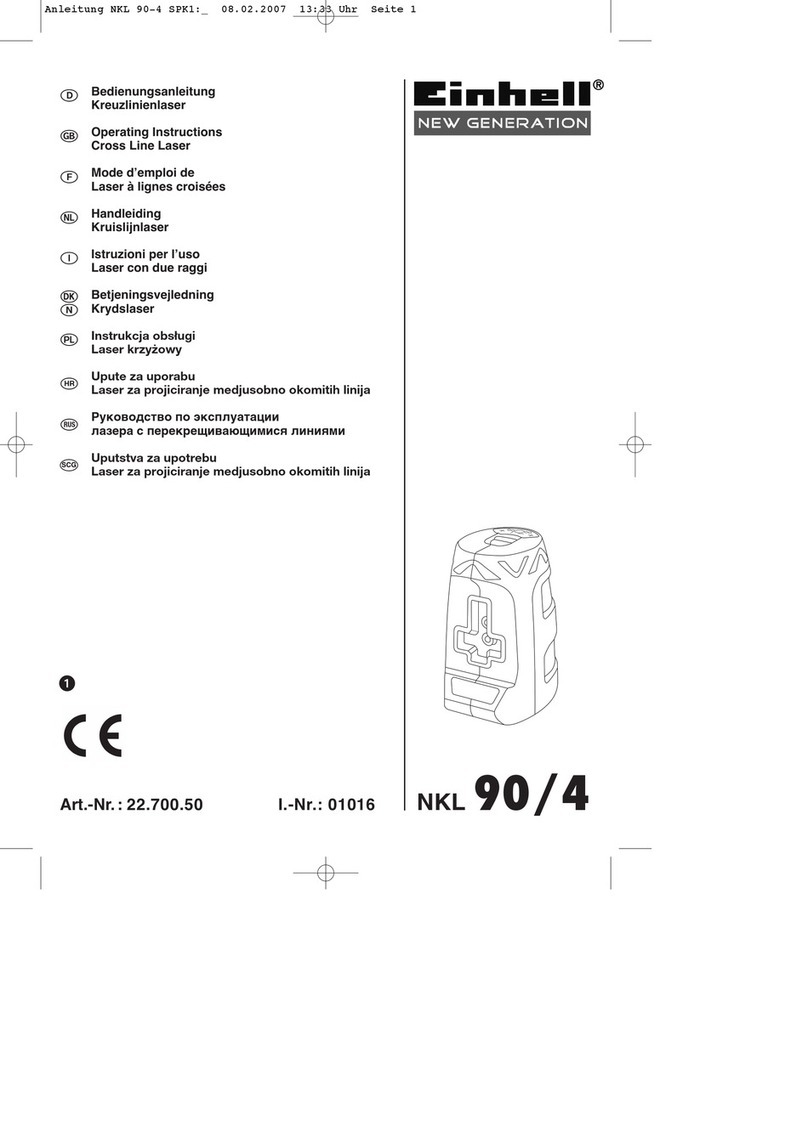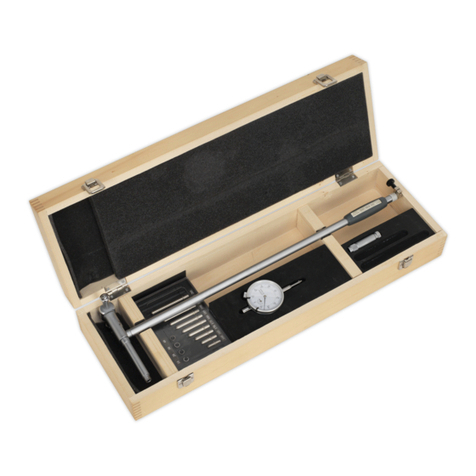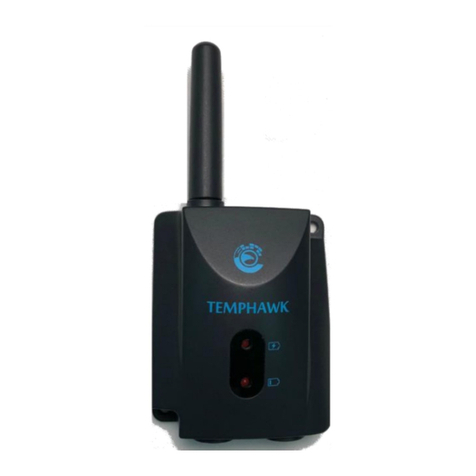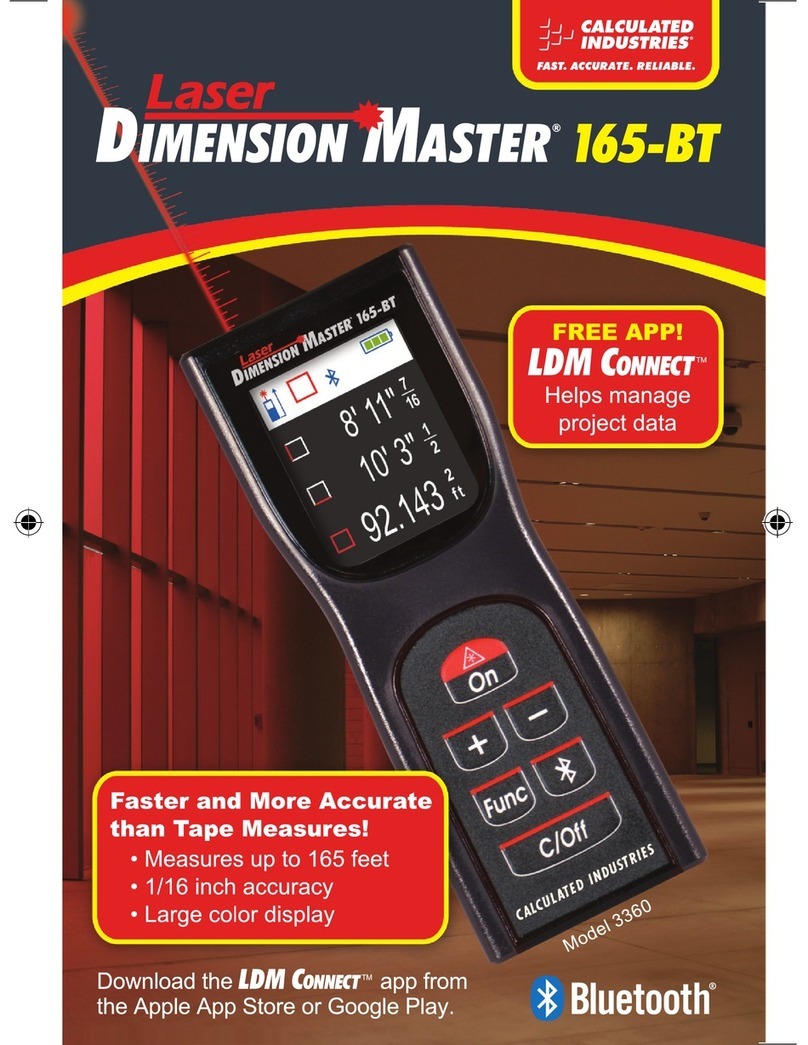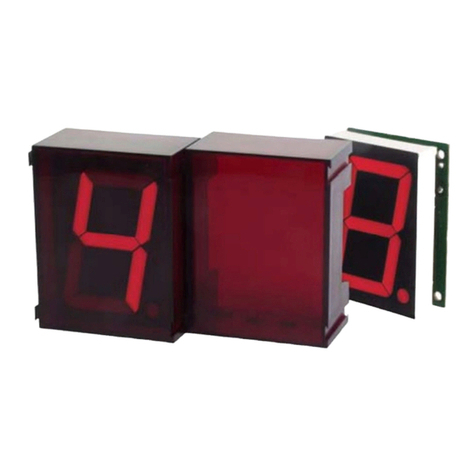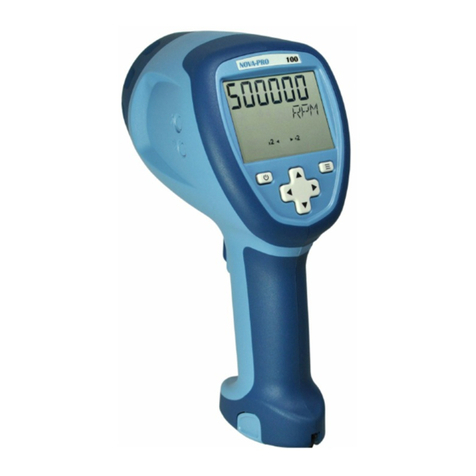Power Test Superflow SF-Black Widow User manual

Pub. No.: 180413 Rev.: 4
February 2020
Operator Manual
www.superow.com
Original Instructions
SF- Black Widow
Engine Dynamometer

ii
Please keep this manual for future reference.
This manual is intended to assist operating personnel in becoming familiar with the product and as guidance
in ordering necessary parts inclusive of SuperFlow's warranty requirements. Maximum operating eciency
and life of any SuperFlow product will be attained through complete understanding of the instructions and
recommendations contained within this manual.
Services performed beyond preventive
maintenance by personnel other than SuperFlow
Service Technicians on any SuperFlow products
during the warranty period may void the warranty.
!WARNING
When available, please include the model
number and serial number of the product in any
correspondence.
IMPORTANT
Copyright 2018 by SuperFlow Dynamometers & Flowbenches. All rights reserved. No part of this publication
may be reproduced, transcribed, or translated by any means without the prior written permission of SuperFlow
Dynamometers & Flowbenches, N60 W22700 Silver Spring Drive, Sussex, WI 53089 USA.
No part of the software or rmware provided with this product may be upgraded, modied, or changed by any
means without the prior written permission of SuperFlow Dynamometers & Flowbenches.
SuperFlow, WinDyn, PowerNet, ProFilter, SF902, XConsole, XDyno, XCart, NSCR, CycleDyn, AutoDyn,
FlowCom, SuperBench, ProExport, SF-110/120/260/450/600/750, SF-1020, SF1200, ProBench, SuperBench,
TD-1200, TDAC, Axiline, TCRS, Hicklin, Racer’s Pack, and SuperShifter are trademarks of Power Test, Inc.
Other trademarks and trade names may be used in this document that refer to the entities claiming the marks
and names or their products. Power Test, Inc. does not hold any proprietary interest in trademarks or trade
names other than its own.
Trademark Notices

iii
1.0 Introduction...................................................................................................................1
1.1 About This Manual .................................................................................................1
1.2 Target Audience .....................................................................................................1
1.3 Product Features ...................................................................................................1
1.4 Principles of Water Brake Dynamometer Operation ..............................................2
2.0 Safety Guidelines..........................................................................................................3
2.1 At Installation .........................................................................................................5
2.2 During Operation....................................................................................................5
2.3 Lockout/Tagout Procedures ...................................................................................6
3.0 System Overview ..........................................................................................................7
3.1 Overview ................................................................................................................7
3.2 Dynamometer ........................................................................................................8
SF-Black Widow.....................................................................................................8
3.3 Date Acquisition ...................................................................................................10
Components.........................................................................................................10
The Sensor Box ...................................................................................................10
The Computer System .........................................................................................11
Electrical Requirements .......................................................................................11
Sensor Panel Modules.........................................................................................12
3.4 Accessories and Options .....................................................................................15
4.0 Installation...................................................................................................................21
4.1 Location ...............................................................................................................21
4.2 Plumbing Diagram ...............................................................................................22
4.3 Unpacking ............................................................................................................23
4.4 Engine Docking Cart ............................................................................................23
4.5 Absorber Stand ....................................................................................................24
4.6 Sensor Box ..........................................................................................................24
4.7 Cooling Towers ....................................................................................................25
4.8 Computer System ................................................................................................27
Communication ....................................................................................................27
Software...............................................................................................................27
4.9 System Cable Connections..................................................................................27
Power...................................................................................................................27
System Interconnect Panel ..................................................................................28
Sensor Interconnect Panel...................................................................................31
4.11 Expansion Panels ................................................................................................32
Pressure Connections..........................................................................................32
Thermocouple Connections .................................................................................33
Analog Voltage Expansion...................................................................................34
4.11 Throttle System....................................................................................................35
4.12 Initial Check-out ...................................................................................................36
5.0 Operation.....................................................................................................................37
5.1 Introduction ..........................................................................................................37
5.2 Safety...................................................................................................................37
Emergency Stop ..................................................................................................38
Table of Contents

iv
Electrical Safety ...................................................................................................38
Fuses ...................................................................................................................38
Safety Procedures ...............................................................................................39
5.3 Test Preparation...................................................................................................40
Mounting the Front of the Engine.........................................................................40
Mounting the Engine ............................................................................................40
Dyno Shaft Connection ........................................................................................41
5.4 Engine Water Cooling System .............................................................................42
5.5 Throttle System....................................................................................................43
5.6 Sensor Connections.............................................................................................44
Stand Connections...............................................................................................44
Engine Connections.............................................................................................44
5.7 Running an Automated Test.................................................................................45
Infrastructure and Engine Setup ..........................................................................45
Operator Console and Computer.........................................................................47
Test Group Dialog ................................................................................................48
WinDyn Prep........................................................................................................48
WinDyn Setup Dialog...........................................................................................48
ValPos Adjustment ...............................................................................................49
Running a Test .....................................................................................................50
Post Test ..............................................................................................................51
Shutdown .............................................................................................................51
5.8 Analyzing the Test Results...................................................................................52
6.0 Maintenance ................................................................................................................54
6.1 Maintenance Schedule ........................................................................................54
Preventative Maintenance ...................................................................................55
6.2 Calibration............................................................................................................56
6.3 2640 Circuit Board LEDs ....................................................................................58
6.4 Servo Valve Indexing ..........................................................................................59
7.0 Troubleshooting..........................................................................................................64
7.1 Servo Valve..........................................................................................................64
Manual test mode: ...............................................................................................64
Automated test mode:..........................................................................................65
Control Electronics:..............................................................................................66
Servo Valve Diagnosis: ........................................................................................68
7.2 Absorber ..............................................................................................................69
7.3 Water System.......................................................................................................71
8.0 Appendix .....................................................................................................................72
Table of Contents

1
1.0 Introduction
1.1 About This Manual
This manual is provided as a reference to explain the operation of the SuperFlow dynamometer system as
used on any engine test system and also covers the operation and maintenance of the SuperFlow engine
test stand.
An electronic PDF copy of this manual is provided on the system conguration thumb-drive sent with the
SuperFlow system.
Please read the complete manual in
detail, prior to operating the
dynamometer. Contact SuperFlow
immediately if you experience
problems to avoid any warranty
issues.
IMPORTANT
1.2 Target Audience
This manual is intended to be used by skilled operators trained in the operation of the equipment by a
SuperFlow representative.
1.3 Product Features
• A system consists of two major components:
- Dynamometer stand with a Power Absorption Unit (PAU)
- Data Acquisition and Control (DAC) system – Computer system with WinDyn software.

2
1.0 Introduction
1.4 Principles of Water Brake Dynamometer Operation
An engine dynamometer is a service tool that allows the operator to safely place a controlled load on an
engine. A loaded engine test is the only method of verifying engine capability. With the use of a dyno, an
engine can be properly operated throughout its power range without being placed into service. Assembly
deciencies may be detected before the engine is installed into a chassis and an actual evaluation of an
engine’s operating condition may be performed. The dynamometer is the nal quality test before an engine
is installed.
A dynamometer has two major components: the absorption unit
and the torque indication system. A water brake dynamometer uses
an absorption unit (absorber) to absorb power through momentum
exchange; using water as the working uid. A water brake absorber
consists of one or more shaft mounted rotors and at least two stators
(or end bells). The rotors spin freely inside the absorber housing in
the absence of water. When water is introduced into the absorber,
the spinning rotor accelerates the water and “throws” it into the
stators. If the stators weren’t restrained, they would also begin to
rotate, similar to a torque converter. But the stators are restrained
using a torque arm that is connected to a load cell.
The load cell measures the force with which the stators are trying to rotate. By knowing the distance from
the axis of the absorber to the torque arm, torque can be measured by: T = F x d
If we measure speed, horsepower can then be found by the relationship: HP = (T x rpm)/5252
The amount of load absorbed is proportional to the volume of water inside the absorber housing. The
water is ultimately absorbing all of the horsepower in the form of heat, therefore the warm water must be
exhausted and replenished with cool water to avoid boiling. By restricting the exhaust and controlling the
ow of water through the absorber, the volume of water inside, and therefore the load, can be precisely
controlled.

3
2.0 Safety Guidelines
Safety is the most important consideration when operating any dynamometer system. Operators and
service personnel should read this manual and become familiar with its content before attempting to
operate this machine or to perform service or maintenance to it. Familiarization with this manual will
minimize the possibility of accidents or injuries. Although the procedures covered in this manual have
proven safe in use, Power Test assumes no responsibility for personal injury or damage to equipment
resulting from its applications. All operators must be aware that there are several hazards present to
anyone in the test cell. Some of these hazards are:
• Objects rotating at high speeds • Pressurized hoses • Hot solids or liquids
• Electrical shock • Flammable liquids • Exhaust emissions
• Noise
Certain precautions must be exercised. They are:
• DO NOT operate without ALL shields, guards, and emergency cutos in place and operating.
• DO NOT enter the test cell during an engine test unless necessary.
• DO NOT wear loose tting clothing in the test cell.
• Warning decals are located near areas of potential danger. Replace damaged or lost decals.
• DO NOT make any connections while power is applied to the system.
• DO NOT open any panels while power is applied to the system.
• DO NOT make any plumbing connections without shutting down all water supplies and pumps.
• DO bleed air pressure from all lines before connecting or disconnecting any air hoses.
• ALWAYS wear eye protection.
• ALWAYS wear eye and hearing protection whenever the engine is operating.
• ALWAYS keep work area clean. If a spill occurs, eliminate the hazard immediately.
• NO smoking or open ame in the test area.
These are general guidelines for working with a dynamometer system. It is often helpful to prepare a
safety checklist that is distributed to all personnel who enter the test cell. Proper safety is achieved through
reinforcement and discipline.
This manual places safety concerns into four categories, they are:
This is the highest level statement. Failure to
follow the listed instructions will most likely result
in severe injury or death.
!DANGER
The statements used with this level of warning deal
with a safe operating procedure. If they are ignored
the possibility of equipment damage or personal
injury may exist.
!CAUTION
This is a statement of serious hazard. Failure
to follow the listed instructions could place the
individual at risk of serious injury or death.
!WARNING
IMPORTANT indicates precautions relating to
operation or usage of the machine or highlights
important information on a page.
IMPORTANT

4
2.0 Safety Guidelines
Refer to Manual
• Read and understand manual
before operation.
• Failure to understand manual may
result in personal injury and/or
death.
Wear Eye and Hearing Protection
• Rotating components could cause
ying debris.
• Noise levels can reach up to 85
decibels (dB) during maching
operation.
Warning
• General warning label.
• Indicates an imminent hazard.
Entanglement Hazard
• Keep hands and arms free of
rotating shaft.
• Ensure system has stopped and
starting has been disabled prior to
servicing.
• Do not operate without all guards
and covers in place.
Automatic Starting Hazard
• Equipment can be started
remotely.
• Ensure dynamometer system
starting has been disabled prior to
servicing.
Burn Hazard
• Hot components, water and/or oil.
• Do not touch during operation or
while cooling.
• Allow to cool before disconnecting.
Electric Shock
• Exercise caution when working on
or nearby. Make certain that power
has been disconnected and all
residual voltage has been taken
under consideration. Unqualied
personnel should never attempt
electrical work.
Electrostatic Discharge
• Printed Circuit Boards (PCBs) and
other electronic devices contain
static-sensitive parts. Observe the
following precautions to prevent
damage to these parts.
• Discharge body static before
handling electronic devices.
• Use wrist or ankle straps to contact
a grounded surface and maintain
contact while handling electronic
devices.
• Turn power to the device OFF
before disconnecting or connecting
cables or wires.
• Do not touch the components or
conductors on a PCB with your
hands or with conductive devices
Carbon Monoxide (CO) Hazard
• Engine exhaust contains carbon
monoxide fumes, be sure test cell
is properly ventilated
• If anyone shows signs of carbon
monoxide poisoning, get them
to fresh air. Fumes can cause
headache, dizziness, lack of
consciousness and/or death.
Contact Power Test if you have any questions
about the safe operations of our equipment and for
service and advice.
The following universal warning decals can be found in the appropriate locations on your equipment. A
description of each warning decal is provided below. In addition, these symbols will appear throughout the
manual in sections where these hazards may be encountered.

5
2.0 Safety Guidelines
2.1 At Installation
• Do NOT lift the dynamometer by the input
shaft. This may damage the dynamometer and
void its warranty.
• ONLY lift the dynamometer between the
absorber and pillow block assemblies with
cloth slings. See Figure 4.3
!WARNING
2.2 During Operation
• Extreme care should be taken in the
area of the drive shaft that connects
the engine to the dynamometer.
• All rotating parts must have their
guards secured in place.
• A drive shaft is considered the
fuse in the test setup. In the
event of a failure in the engine or
dynamometer, the shaft may break.
This will save on costly repairs
to an engine or dynamometer.
However, because of this possible
failure, the machine should NEVER
be operated without a shaft guard.
!DANGER
• Engine exhaust contains carbon
monoxide fumes, be sure test cell
is properly ventilated
• If anyone shows signs of carbon
monoxide poisoning, get them
to fresh air. Fumes can cause
headache, dizziness, lack of
consciousness and/or death.
!DANGER
• Take care that the dynamometer is not dropped
or set down sharply. This could cause damage
to the bearing races and brinelling of the
bearings.
• The load cell should be handled with equal
care. Distortion of this cell will hinder its proper
operation.
!CAUTION
WEAR EYE and HEARING
PROTECTION. Proper eye and
hearing protection should be worn
at all times when the equipment is
operating.
!WARNING
AUTOMATIC STARTING HAZARD.
The dynamometer could be started
remotely if equipped with an Air
Starter. Ensure starting has been
disabled prior to servicing.
!WARNING
BURN HAZARD.
During operation water temperature
inside the dynamometer can reach
over 125° F. Do NOT touch discharge
water, piping or the dynamometer
surface during operation. Allow to
cool before servicing.
!WARNING

6
2.0 Safety Guidelines
• Inspect the equipment monthly to ensure that
there are no broken or worn parts which could
cause injury to personnel or damage to the
equipment.
• Only qualied operators and maintenance
personnel should perform the procedures
covered in this manual.
!WARNING
2.3 Lockout/Tagout Procedures
Figure 2.1: Lockout/Tagout
XXXXXXXXXXXX
XXXXXXXXXXX
OPERATE
DO NOT
The Occupational Safety and Health Administration (OSHA) requires, in addition to posting safety warnings
and barricading the work area (including, but not limited to, control room and testing bay), that the power
supply has been locked in the OFF position or disconnected. It is mandatory that an approved lockout
device is utilized. An example of a lockout device is illustrated in gure 2.1. The proper lockout procedure
requires that the person responsible for the repairs is the only person who has the ability to remove the
lockout device.
In addition to the lockout device, it is also a requirement to tag the power control in a manner that will
clearly note that repairs are under way and state who is responsible for the lockout condition. Tagout
devices have to be constructed and printed so that exposure to weather conditions, or wet and damp
locations, will not cause the tag to deteriorate or become unreadable.
Power Test does not recommend any particular lockout device, but recommends the utilization of an
OSHA approved device (refer to OSHA regulation 1910.147). Power Test also recommends the review and
implementation of an entire safety program for the Control of Hazardous Energy (Lockout/Tagout). These
regulations are available through OSHA publication 3120.
• Personnel should NOT be in the test cell during
operation and observation areas MUST be
constructed to protected personnel.
• Personnel and other equipment should be kept
clear of the drive shaft guard area and NEVER
cause an obstruction or block doorways.
!CAUTION
The dynamometer is a tool. All personnel should
be kept clear of the area and only be in the test
area on a “need to be” basis.
IMPORTANT
When working with electrical or
electronic controls, make sure that
the power source has been locked
out and tagged out according to
OSHA regulations and approved
local electrical codes.
!WARNING

7
3.0 System Overview
3.1 Overview
The WinDyn dynamometer system is an instrumentation package designed for complete test control and
data acquisition of an engine or chassis dynamometer. Typical applications include:
• Research and development (R&D)
• Performance testing
• Durability and quality control testing
• Fuel consumption and emissions testing
• Education
• Certication testing
You can congure WinDyn for your specic testing needs and can expand it with additional data acquisition
capabilities and interfaces as needed. For highest productivity, you can share test data over a facility
computer network.
A dynamometer system consists primarily of two major components: the Power Absorption Unit (PAU) on a
stand with its associated equipment, and the Data Acquisition and Control (DAC) system with its associated
accessories.
• The PAU (or absorber) can be a SuperFlow water brake or a water brake absorber from a dierent
manufacturer, or it can be an electric eddy current (EC) absorber. The absorber stand also holds
auxiliary equipment such as a fuel delivery and ow measurement system, a water supply and drain
tank, an engine cooling system, a battery or other power source, and a throttle control actuator.
• The DAC system is made of the Central Processing Unit (CPU), an operator control interface, a device
to control the load applied to the absorber, and a network of sensors to collect data from the absorber
and the engine. The WinDyn software on a stand-alone Personal Computer (PC) allows users to
display and analyze the data during and after a test.
The purpose of using a dynamometer is to test the load capability of an engine prior to putting it back in
service. It allows for the break-in of a new or newly rebuilt engine in a controllable environment. Typically
the SF-Black Widow system is distributed to racing engine manufactures or rebuilders. They have proven
this type of break-in procedure through many years of experience. Properly run-in engines last longer, run
better and cost less to maintain.

8
3.0 System Overview
3.2 Dynamometer
The dynamometer stand provides all of the connections from the sensors to the data acquisition system
and the mount for the power absorber.
SF-Black Widow
The SF-Black Widow system utilizes a oor-mounted absorber stand and a roll-around engine docking cart
to maximize test eciency in high-volume environments. The versatile docking engine carts are used to
pre-stage and dress the engines before they are installed in the test cell. The dynamometer stays in the
test cell connected to all its supply lines and support systems. Roll the engine into the cell, dock the cart to
the dyno, and attach the fuel supply, airow turbine, oil and coolant lines, and sensors. The cart is clamped
to the absorber stand for testing.
The boom provides clean routing of cables, fuel lines, and cooling pipes. It keeps all the accessories and
engine support lines close and available when needed.
The docking cart and boom system keep the test cell safe, organized, and attractive while allowing rapid
engine changes. Additional mounts for ignition boxes and work tools can be added if desired. Optional
features include cooling ow measurement, and temperature control on oil and engine coolant.
Specications
• Absorber Type: Water brake
• Maximum Absorber Speed: 11,000 rpm
• Horespower Capacity: 3,000 hp (2,237 kW)
• Torque Capacity: 2,500 lb.-ft. (3,390 Nm)
Water Quality
The quality of the water used in a dynamometer affects absorber and water pump operation.
Contamination, salt water, or water with a high mineral count can reduce their life and increase
maintenance costs. The load control valve and water seals in the absorber can quickly deteriorate with bad
water. Provisions should be made to prevent the growth of algae and bacteria, as well as corrosion or scale
formation within the equipment. Water system maintenance is essential to ecient operation, consult a
water system specialist to create the proper program to monitor your system.
Filters:
For both open water and recirculating systems, install a lter to clean the water before it enters the
dynamometer and engine cooling tower. Install a dierential pressure gauge across the lter to determine
when the lter needs cleaning. The water should be ltered to remove 0.004- inch diameter particles
[100 microns]. In recirculating systems, a lter installed on the return water line back to the supply tank
helps keep particles from the engine and dynamometer from getting into the supply water system.

9
3.0 System Overview
Figure 3.1:SF-Black Widow Engine / Absorber Stand
Integrated boom routes water from the
engine to the cooling tower and organizes
transducer cables.
Boom mounted
sensor box.
Heavy-duty drive
shaft guard.
Torsionally compliant
dynamometer driveshaft with
constant velocity joint.
Versatile docking
engine cart.
Overcentering clamps securely connect
docking cart and baseframe.
Dual starters
Industrial grade, heavy-duty
baseframe.
Rugged, high torque
power absorber.
Temperature
compensated
load cell.
Large tool tray.

10
3.3 Date Acquisition
Components
A WinDyn data acquisition system consists of at least two components. They are the sensor system and
the computer system.
NOTE: Additional options and accessories that can be added to the system are described later in this
chapter.
The Sensor Box
The sensor box consists of a set of data acquisition
and control electronics mounted inside a sheet
metal sensor box and is the central core of data
acquisition. The box is normally mounted on the
absorber stand but can be installed on a boom, the
wall, a rolling stand, or on other support apparatus.
The sensor box contains the CPU circuit card,
sensor panels, and system interconnect panels.
The CPU measures and records all data and
generates control signals, then broadcasts this
data over an Ethernet network to display on the
WinDyn computer software.
The sensor box has slots for expansion panels
such as thermocouple panels, pressure panels,
analog inputs panels, and so on.
The system inputs signals from various sensors
and converts those signals into a digital format.
Airow, fuel ow, and engine speed are measured
as frequencies. A load cell measures torque as an
analog voltage. Pressures and temperatures are
also measured as analog voltage. A barometric
pressure transducer is mounted on the CPU to
measure atmospheric conditions during the test.
Other sensors can be added as needed.
Do NOT adjust any of the potentiometers on the
2640 board. Contact your representative if you
have any questions about the safe operations of
our equipment and for service and advice.
IMPORTANT Figure 3.2: The Sensor Box
3.0 System Overview

11
3.0 System Overview
The Computer System
The computer system consists of a standard
computer with up to three monitors installed,
a color printer, and WinDyn dynamometer
software. Other than the network connection and
minimum performance specications, no special
requirements must be met.
SuperFlow’s WinDyn dynamometer software
was designed for Microsoft®Windows®-based
computers.
The computer communicates with the sensor
system through an Ethernet Local Area Network
(LAN) cable. Commands to the test system can
only be issued from this computer.
All printers supported by Windows can be used.
A color printer is recommended for highest impact
and clarity of test graphs. The printer is connected
to the computer.
Electrical Requirements
The WinDyn instrumentation system requires a dedicated, stable electrical power source for proper
operation. SuperFlow recommends using an Uninterruptible Power Supply (UPS) that has a minimum
rating of 750 VA or a high-quality surge suppressor for the sensor box and computer. This may protect the
electronics from damage in the event of a power surge and keep the engine running if the power goes out.
It is best to connect all instrumentation devices to the same circuit to minimize ground loop noise. Adding
devices such as battery chargers and fan motors to the same circuit can cause noise problems.
The total power requirement for a basic instrumentation system is 120V/15A or 240V/8A.
TIP: Your electrician can wire the electrical circuits in your test cell with outlets for the sensor box and
computer wired to a special protected circuit.
Figure 3.3: Operator Console
SuperFlow recommends dedicating the computer
connected to the dynamometer for dynamometer
use only and not utilizing it for other purposes.
Multiple programs and Internet access could
possibly slow down the computer and aect the
dynamometer operation.
IMPORTANT

12
Sensor Panel Modules
System Interconnect Panel (LEMO)
The system interconnect panel provides the
primary connection between the sensor box and
the peripheral devices (computer, relay box, etc.).
The panel also provides connections for some
sensor inputs.
• Color-coded and keyed LEMO connectors
• Brown - Remote handheld controller serial port
• Red - Air sensor frequency inputs
• Blue - Air temperature and humidity sensor
inputs
• Yellow - Auxiliary frequency input (Tach./Freq.)
• Green - Engine speed sensor input (May also
be used for frequency type devices)
• RJ-45 Category 5 (Cat-5) serial connectors
Sensor Interconnect Panel (AMP)
The sensor interconnect panel provides the primary
connections between the sensor box and the
dynamometer sensors.
• Absorber speed and torque sensor connections
(engine dynos)
• Dynamometer interface (chassis dynos)
• Servo valve connection (engine dynos)
• Electronic throttle connection
• Auxiliary voltage sensor inputs
• Fuel turbine frequency inputs
• Auxiliary control outputs
• Digital input and output connections
NOTE: SuperFlow recommends capping or covering any unused AMP connector.
Figure 3.4: System Interconnect Panel
Figure 3.5: Sensor Interconnect Panel
3.0 System Overview

13
3.0 System Overview
Thermocouple Input Panel
The thermocouple panel provides 16 channels for
temperature measurements on the test device.
• 16 channels per panel
• Type K, (grounded or ungrounded)
• Type K thermocouple range, -454° to 2,300°F
(–270° to 1260°C), linearized
• Universal panel jacks accept both standard and
miniature connectors
Pressure Input Panel
The pressure panel provides up to 10 channels
of pressure measurements on the test device.
The standard system ships with three channels
installed. These are:
• Channels 63, 67 & 68: 0–150 psi [0–1034 kPa]
63 = Man_P
67 = Oil_P
68 = DynWTP
Figure 3.6: Thermocouple Input Panel
Figure 3.7: Pressure Input Panel

14
3.0 System Overview
Engine Control Panel
The engine control panel has ve outputs
electrically controlled by console switches or by
programmed test proles. Four outputs provide 12V
switched DC power for ignition, starter, fuel pump,
and auxiliary control.
• Internal, automatic reset, 50A thermal breaker
on input source, automatic reset, 10-amp
polyfuse on ignition output; 14 amps on the
starter and fuel pump outputs and 5 amps on
the auxiliary output
• Emergency stop functions when used with
WinDyn limits or emergency stop switches
• Provides one unswitched, 10-amp, fused 12V
connection for external devices
• Connection for remote starter switch
Servo Valve Panels
These panels provide connection plugs for the
servo control valve inlet and outlet cables.
Figure 3.9: Servo Valve Input Panel
Figure 3.8: Engine Control Panel
DO NOT use the Magneto Kill Ground connection.
!CAUTION
Figure 3.10: Servo Valve Outlet Panel

15
3.0 System Overview
3.4 Accessories and Options
A wide selection of additional sensors, adapters, and engine accessories are available. Contact SuperFlow
Sales or Customer Service for additional details.
Analog Voltage Input Panel
The analog voltage panel is an optional accessory
that provides up to eight channels of voltage
measurements on the test device.
• Eight channels per panel
• Adjustable gain and oset accepts any voltage
between –100 and +100 VDC
• Color-coded and keyed 11-pin LEMO
connectors
Recommended levels of excitation and reference
voltages available on each of the front panel
connections for sensors or other devices.
• +5F: +5VDC @ 100 mA, poly-fused at 0.1A
• +12F: +12VDC @ 500 mA, poly-fused at 0.5A
•
Air Fuel Kit
AEM’s 4-Channel Wideband UEGO Controller
allows users to simultaneously monitor individual
cylinder Air/Fuel Ratios (AFR) on up to four
cylinders. Pair multiple units together for use on 6,
8, 10 or 12 cylinders.
• Allows for monitoring of individual cylinder
AFRs for maximum engine power and safety
• Two status lights per sensor for error detection
and operating status
• Compact (4.8" x 4.55" x 1.44"), weather &
shock proof enclosure
• Accurate to 0.1 AFR
• Refer to the AEM Performance Electronics Wideband UEGO Controller instruction manual for detailed
information.
Figure 3.11: Analog Voltage Input Panel
Figure 3.12: Air/Fuel Monitor

16
Fuel System
The fuel system consists of a high performance fuel
pump and fuel regulators to provide two measured
and regulated engine fuel channels. The system
is rated up to 800 lbs/hr total delivery with both
channels used.
• Range per channel @ 7psi: 0–400 lb/hr (100
g/s) x 0.1 ± 0.5% fs
• Specic gravity range: 0.40–1.40
Fuel Canister
Designed to measure fuel consumption of fuel
injected engines.
• Mid ow unit available in 20 – 720 lb./hr.
• High ow unit available in 30 -1070 lb./hr.
• Available for gas and alcohol.
Figure 3.13: Fuel System
Figure 3.14: Fuel Canister
3.0 System Overview
Table of contents
Popular Measuring Instrument manuals by other brands
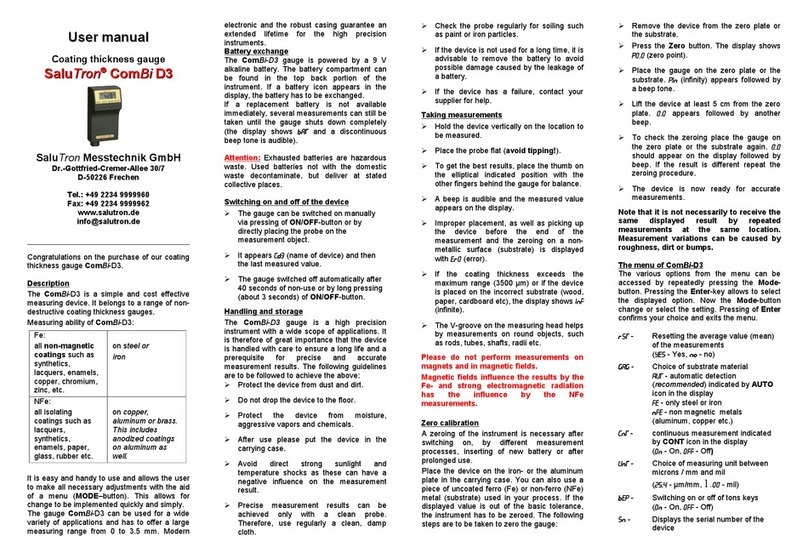
Salutron
Salutron ComBi D3 user manual
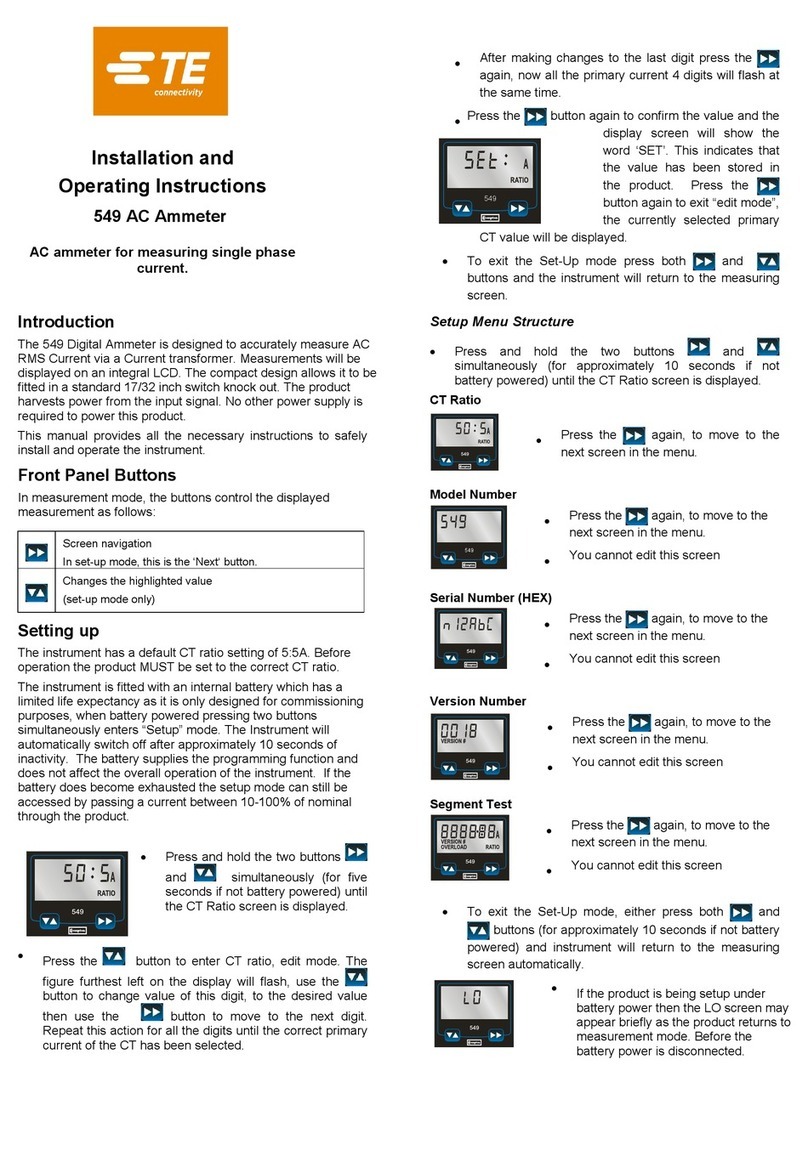
TE Connectivity
TE Connectivity 549 Installation and operating instructions
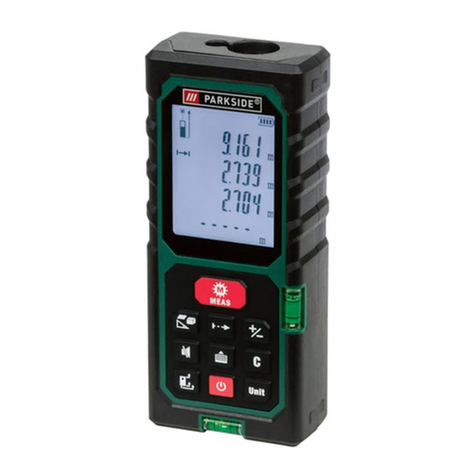
OWIM
OWIM Parkside HG06987 Operation and safety notes
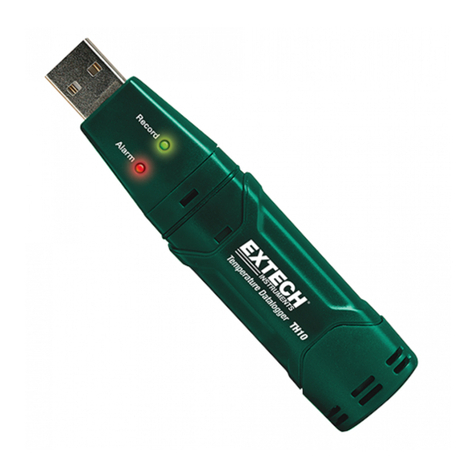
Extech Instruments
Extech Instruments TH10 Guide
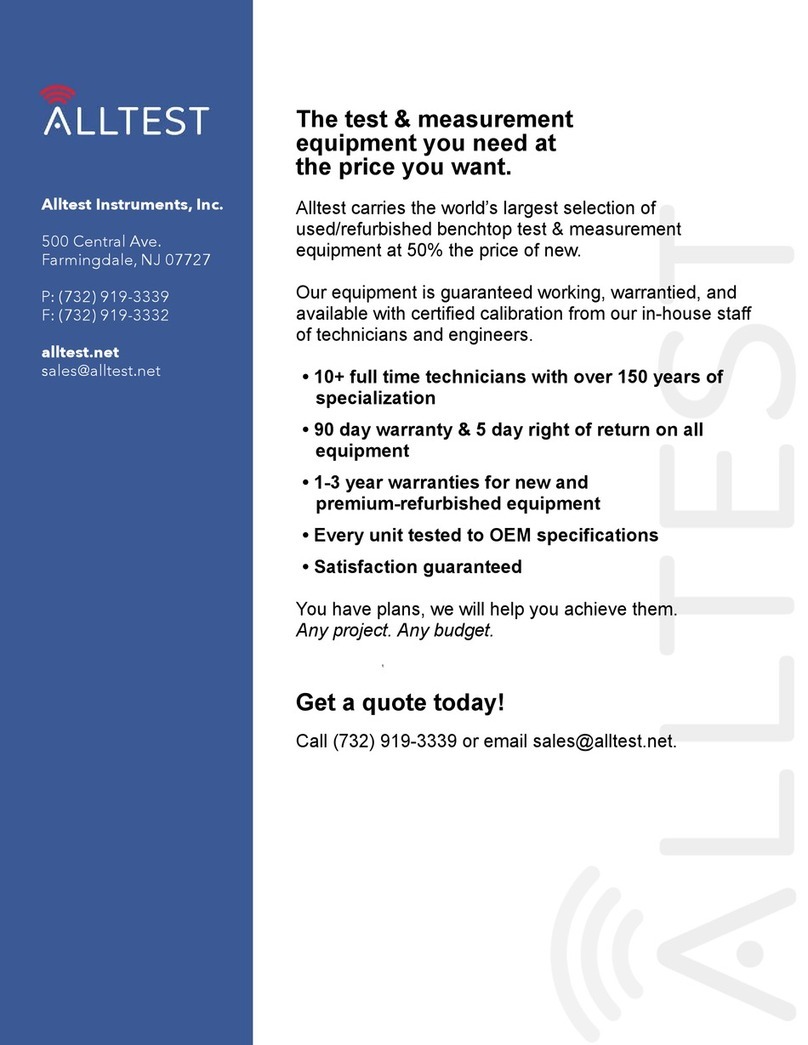
Agilent Technologies
Agilent Technologies 4286A user guide
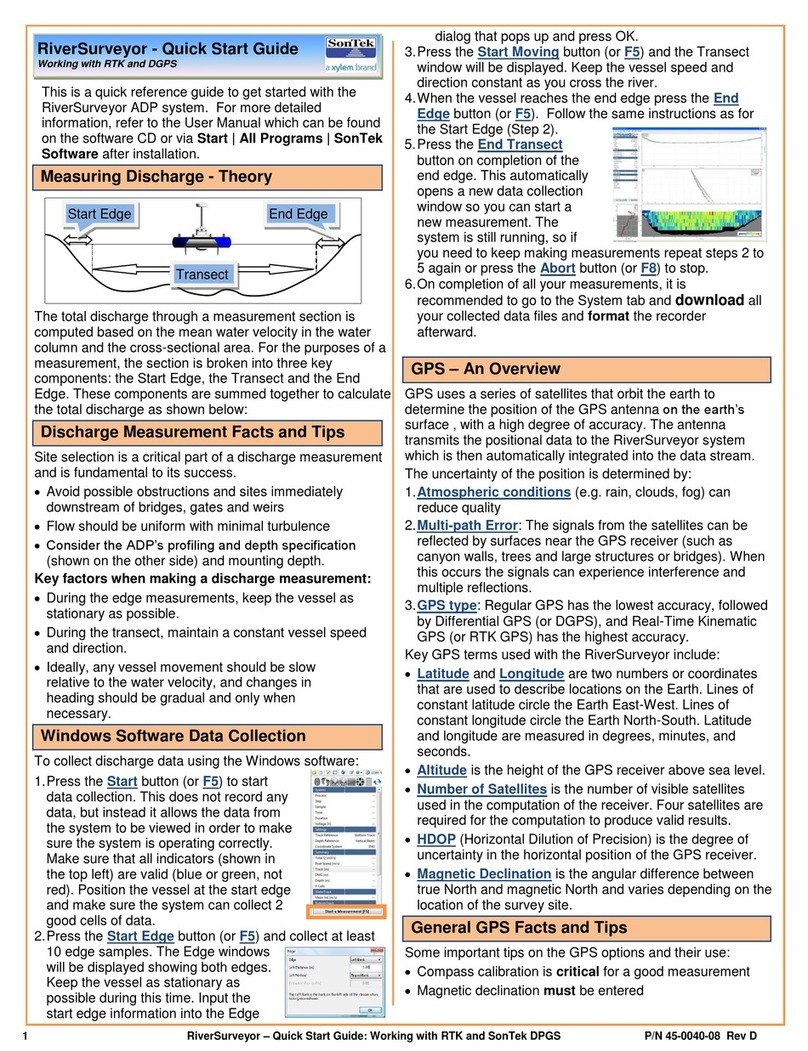
Xylem
Xylem SonTek RiverSurveyor quick start guide
